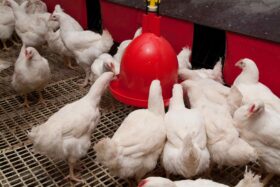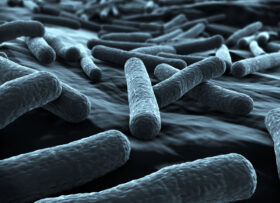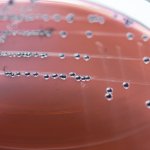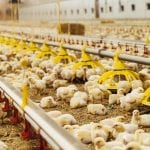Conference report
The concept of feeding poultry, specifically broilers and layers, with reduced crude protein (CP) diets is gaining traction among nutritionists. The economic implications of balancing amino acids currently dictate dietary CP levels. At the recent EW Nutrition Poultry Academy in Jakarta, Indonesia, Dr. Steve Leeson, Professor Emeritus at the University of Guelph, Canada, raised a crucial question: “What does ‘low CP’ really mean?” He states that it typically means a reduction of maximum 2-3% relative to current CP levels.
Low CP diets generally involve a decrease in soybean meal, compensated by higher grain content. This change increases dietary starch and decreases dietary lipid levels. To meet nutritional needs, these diets also include higher amounts of crystalline (synthetic) amino acids.
Dr. Leeson outlined the advantages and disadvantages of low CP diets. Positives include improved gut health due to reduced proteolytic bacteria, less environmental pollution, lower water intake (improving litter quality), improved sustainability indices, increased dietary net energy, and better performance during heat stress. Negatives encompass issues like lower pellet quality, altered dietary electrolyte balance, higher diet costs, reduced growth rate and feed efficiency, and increased abdominal fat deposition. There are also questions about the presumed complete utilization of crystalline amino acids, which can be as high as 25kg/MT in these diets.
Challenges with Low CP Diets
- Protein vs. Amino Acids: Diets are typically formulated based on digestible amino acid content, though minimum CP levels remain common, to avoid reduced performance: Dr. Leeson noted that broiler diets with less than 19% CP in starter and 15% in finisher phases, and layer diets below 13% CP, often fail to deliver adequate performance, regardless of digestibly amino acid supply.
- Utilization of Free Amino Acids: The crystalline amino acids are immediately absorbable in the small intestine, contrasting with protein-bound amino acids that are absorbed as di- and tri-peptides. Amino acids absorption dynamics and endogenous loss of amino acids are affected by (high) levels of crystalline amino acids.
- Non-Essential Amino Acids: The impact of reduced CP on animal performance might be related to the lower levels of presumed non-essential amino acids, e.g. glycine and serine. This is an area for further exploration.
- Energy Level Considerations: Dr. Leeson suggests maintaining specific ratios of digestible lysine to apparent metabolizable energy in broilers at different growth stages. The heat increment of CP is an essential factor, as it reduces net energy efficiency, possibly requiring an adjustment in amino acid to metabolizable energy ratios as poultry diets are not based on net energy values.
- Gut Health: Lower CP levels can reduce the flow of undigested protein into the hindgut, reducing the risk of necrotic enteritis, and the production of harmful metabolites, like biogenic amines.
- Role of Proteases: Protease use can lead to a further 2-4% reduction in dietary CP, with the response depending on the inherent protein digestibility of the diets.
- Impacts on Pellet Quality: Due to the binding properties of protein, each 1% reduction in CP typically results in a 2% decrease in pellet durability (index).
- Electrolyte Balance: Reduced CP can significantly lower dietary electrolyte balance, which has to be considered in feed formulation. Amongst the nutrients contributing to DEB value, Sodium and Potassium appear to be the most influential minerals to consider.
Conclusion
Dr. Leeson anticipates that low CP diets will become increasingly relevant. They have the potential to reduce environmental pollution and dependence on soybean meal, despite current challenges in reducing feed costs.
***
EW Nutrition’s Poultry Academy, featuring Dr. Leeson, took place in Jakarta and Manila in early September 2023. With nearly 50 years of industry experience, Dr. Leeson has made significant contributions to poultry nutrition and management, evidenced by his numerous awards and over 400 published papers.
















